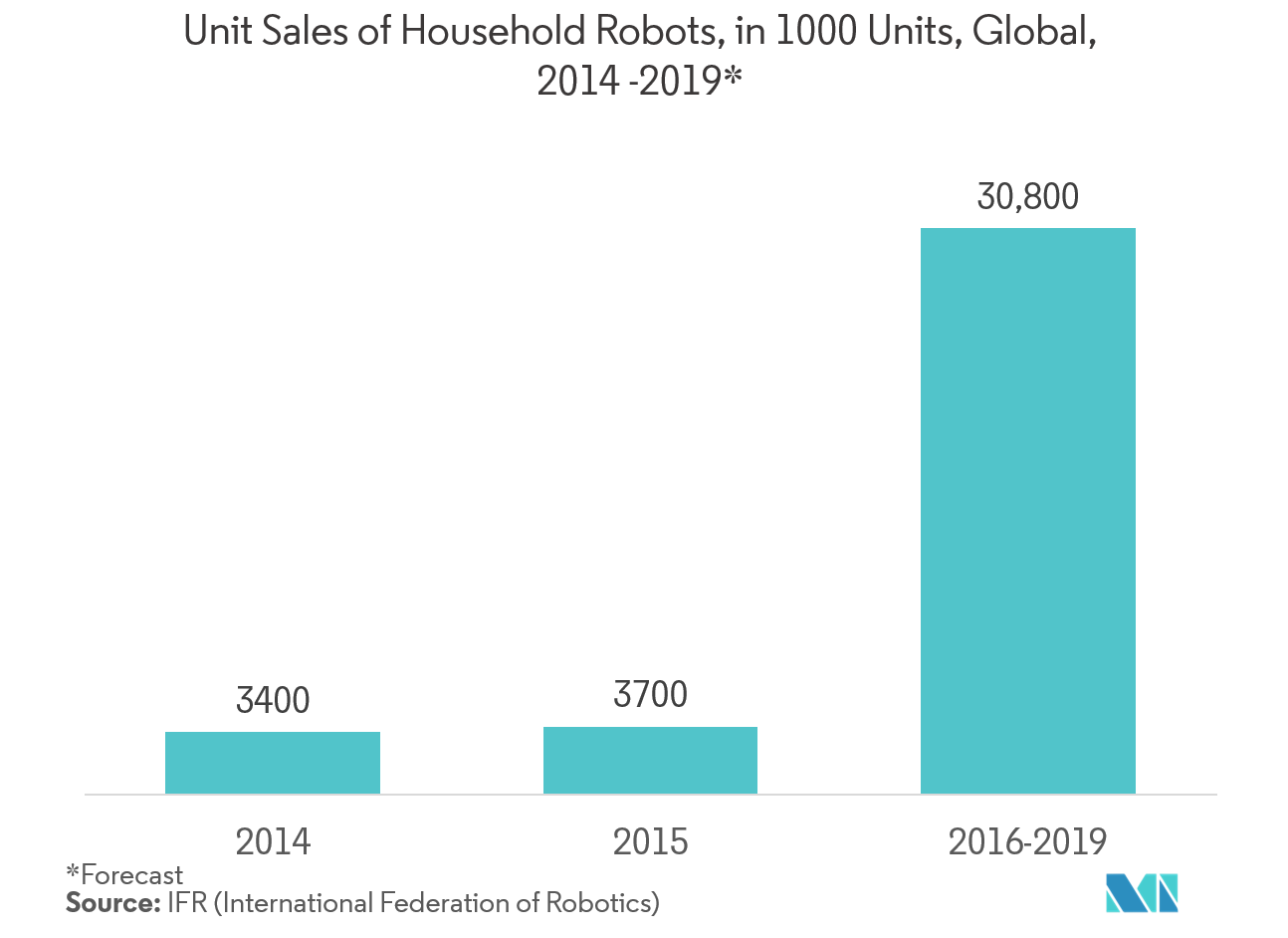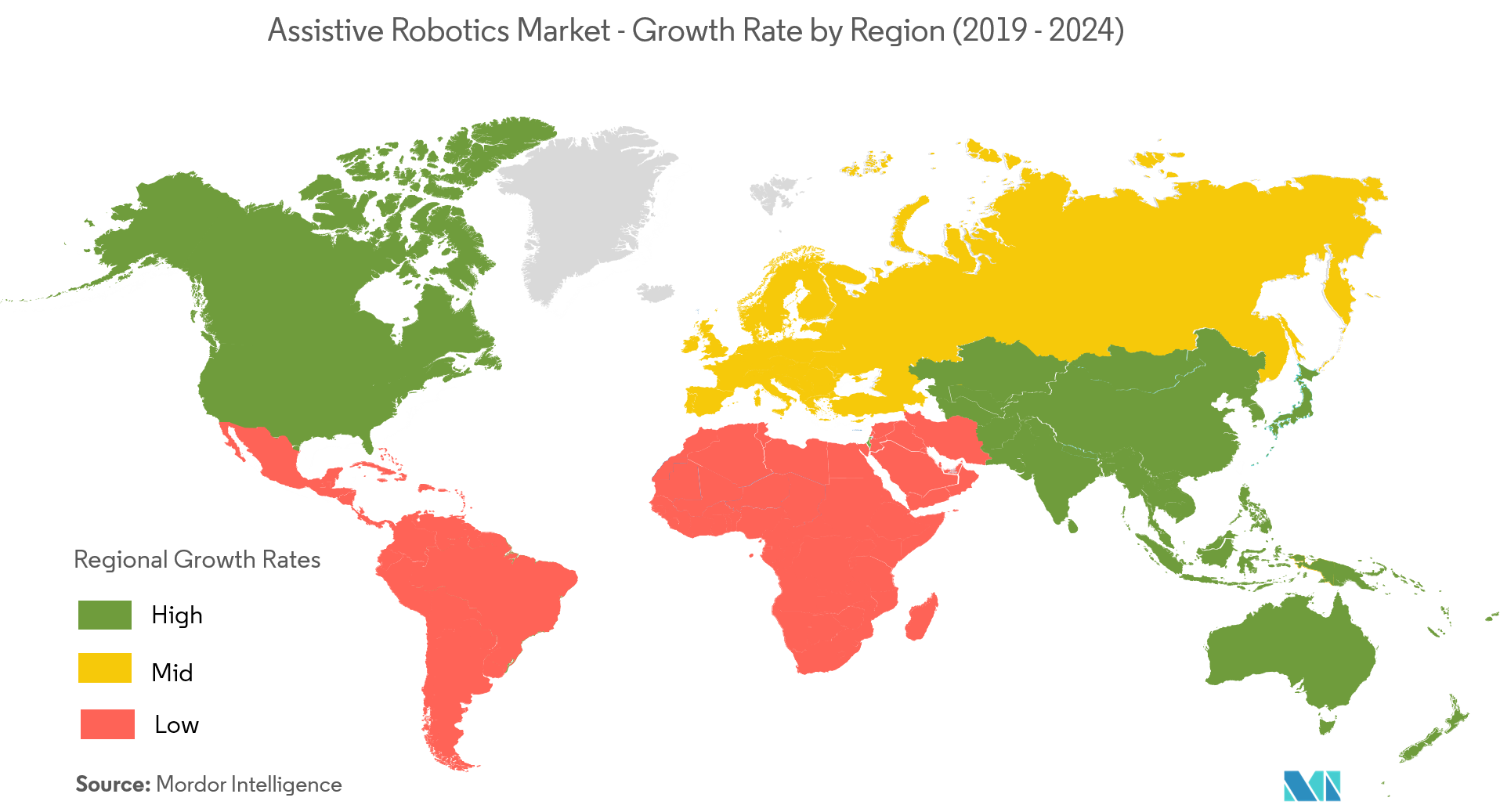Market Trends of Assistive Robotics Industry
This section covers the major market trends shaping the Assistive Robotics Market according to our research experts:
Socially Assistive Robots (SAR) Holds the Significant Share in the Market
- Physical activities have tremendous benefits to older adults. A report from the World Health Organization has mentioned that lack of physical activity contributed to around 3.2 million premature deaths annually worldwide. With the rise in the population of older adults, which is expected to triple by 2050, this SAR will aim to improve the quality of life for a significant proportion of the population for household segment.
- Socially assistive robots, if properly utilized, would assist older people in their daily routines and increase their quality of life by performing some much-needed functions such as reminders to take meals and medication, offer suggestions for activities and encourage social interactions.
- The University of Pittsburgh & Carnegie Mellon University developed the Pearl nurse robot. It is a personal and social robot that helps the elderly go about their daily routines. Other robotic technologies used to assist older adults as well as the disabled are exoskeletons, electric wheelchairs, and other similar devices.
- Various research and developments are ongoing to improve the performance and activities of robots. Companies like Waypoint Robotics and sister R&D company Stanley Innovation are working on optimizing the mobility part of autonomous eldercare robotics by creating mobile robotic platforms that are adaptable and scalable.
- Also in Mar 2019, ChartaCloud ROBOTTECA announced the launch of specialized socially assistive robot-based behaviors for daily living engagement in eldercare which will also show the properties of behavior intervention for autism, assisted pediatric medical care in hospitals,etc. Hence with increasing innovation, the Assistive Robotics market shows potential growth in the future.

North America Account for Significant Market Share
- North America holds the significant share due to growing demand from the healthcare sector for rehabilitation and a favorable funding scenario for research on assistive technologies.
- In the United States, the government agency is taking the initiative to fund the Assistive Robotics market. For instance, the National Science Foundation is investing in the development of service robots, particularly in eldercare robotics projects that help to increase mobility in elder patients.
- Moreover, players are also investing to improve the market growth. For Instance, in Oct, 2019, Labrador Systems, an early-stage technology company developing a new generation of assistive robots, announced that it has closed a USD 2 million Pre-Seed round led by SOSV's hardware accelerator HAX, in partnership with Centrica Hive, with participation from Amazon’s Alexa Fund, iRobot Ventures and iD Ventures America. The company is pioneering a new version generation of assistive robots to empower seniors and others to live more independently and provide a new platform for supporting home health in the United States. The investment will be used to expand development of Labrador’s platform and conduct pilot studies with partners in 2020.


